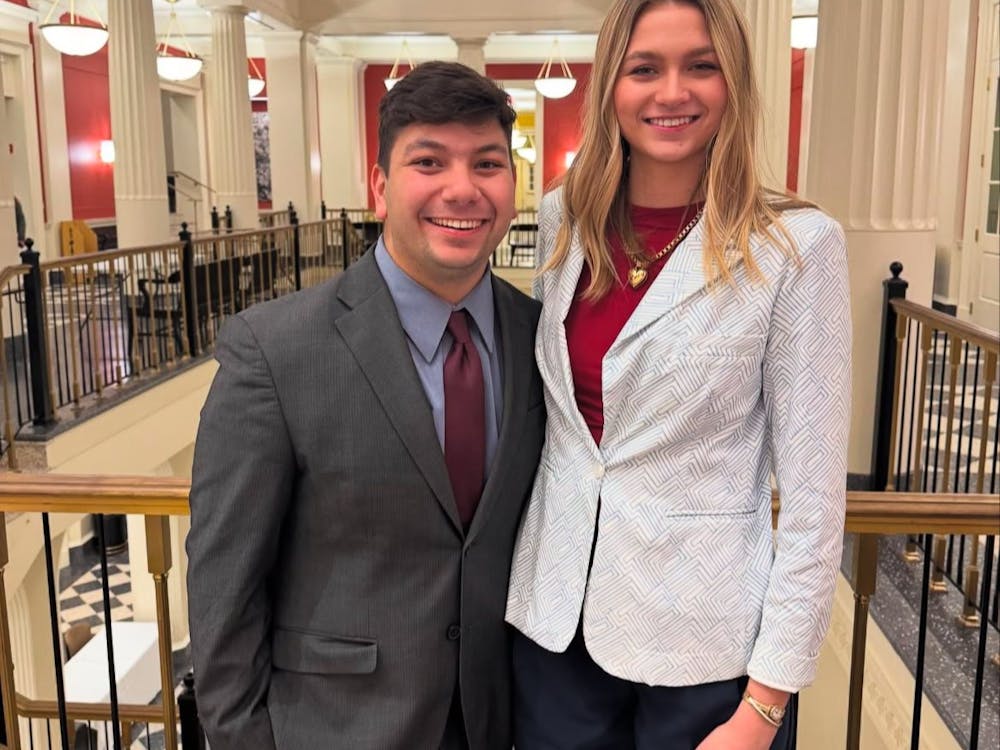Miami University has always emphasized its academic integrity policies, but most students have never had a glimpse into what the academic integrity process is actually like.
It starts with detection. Miami’s academic integrity policy requires instructors to report a student any time they are suspected of violating the university’s guidelines. Still, a preponderance of evidence is necessary to find a student liable, meaning it can be a lengthy process of gathering evidence.
Ronald Becker, a professor in the department of media, journalism and film, teaches MJF 105 in which he typically sees about two to three cases of misconduct per semester.
“I will often meet with a student before I submit a report to talk about when I find a problem, and see what the student has to say about the situation [to see] if there's any misunderstanding,” Becker said.
Becker said an instructor suspects an academic dishonesty violation when a student’s work doesn't look like their own. Instructors also have tools, such as Turnitin, which checks for plagiarism.
In the case of AI, Miami no longer uses software to check if a student’s submission is generated with it. Becker says instructors are typically able to recognize if a student’s work is not their own without assistance. Once an instructor has determined that a student’s work might violate the university’s guidelines, they fill out an online form that goes to the Office of Academic Integrity.
“Faculty are still learning how the GPT forms of academic misconduct are going to be handled,” Becker said, “that's much more difficult to prove.”
After an instructor has reported a student's work, Brenda Quaye, the assistant director of academic integrity, reviews the report and the accusations against the student. She said she notifies the student via their Miami email of the report and informs the student why they are suspected of violating university policy. She then schedules an initial meeting called the procedural review.
At the procedural review, Quaye meets with the student to go over the accusation and what happens next.
“I also talk about bigger picture kinds of things with some students if that seems necessary … for example, there are a lot of students as they're talking to me who may be talking about time management issues, or not understanding what the assignment instructions were, maybe who didn't read the syllabus,” Quaye said. “I want to make sure [they're] getting the resources and the support [they] need or provide some other educational information for those students.”
Students can then accept responsibility for the violation and receive the sanctions proposed, or move forward with a hearing. According to Quaye, around 60% of academic dishonesty violations end with students taking responsibility and receiving sanctions at the procedural review.
If a student chooses to proceed with a hearing, the department of the subject where the violation was committed will hold the hearing. The department chair typically serves as the hearing officer, but the role can be delegated by the chair to someone else.
Enjoy what you're reading?
Signup for our newsletter
Mary Jean Corbett, the interim chair of the English department, serves as the English department’s hearing officer for cases of academic integrity violations. She prefers to view the hearing process less as a disciplining procedure, but more as a learning experience instead.
“I frame it at the beginning as potentially a teachable moment,” Corbett said.
At an academic dishonesty hearing, the student meets with the hearing officer and the professor who raised concerns. The student can bring an advisor, such as a professor or a lawyer, and up to two people for support, such as a friend or family member, but neither party can speak for the student. They can only advise and support them.
At the hearing, the instructor presents evidence of the student’s violation. The student will be allowed to present a statement and submit any evidence. The process of gathering evidence can be lengthy, with complicated cases having more than 50 pages of materials.
“You have to make your way through the material, you have to follow the logic of the instructor,” Corbett said. “I have a responsibility to actually know the ins and outs so I can ask good questions and also so I can prepare.”
The hearing officer asks both parties questions until they reach a decision. While students are typically found responsible, they could have a lighter sanction imposed on them, or a more severe sanction if the charges are more serious than originally thought.
Students found liable will have a 5-business-day window to appeal to the dean of the college. Appeals can be filed if the student believes the sanctions were inappropriate if there was a substantial procedural error, or if there is new evidence. If the dean believes there is merit to the appeal, they will either impose the appropriate sanctions or order a new hearing and appoint a new hearing officer.
Students who do not appeal receive the sanctions given by the hearing officer.
According to Quaye, the sanctions received depend on the severity of the violation. First-time offenders receive a zero on the assignment and must undergo an online course that educates them about academic integrity. This course typically costs around $200.
If the first offense is severe, such as a major exam or assignment, the student might receive an ADF grade in the course, which signifies an act of academic dishonesty on the offender’s transcript. The university’s course retake policy cannot be used for a course with an ADF.
On the second offense, the offender receives a minimum one-semester suspension from the university. The third offense results in the student's dismissal from the university.
“I don't think students should be frightened of making mistakes because that's what it is,” Corbett said. “They're making mistakes, but faculty are making mistakes too, [and] we're all learning together.”




